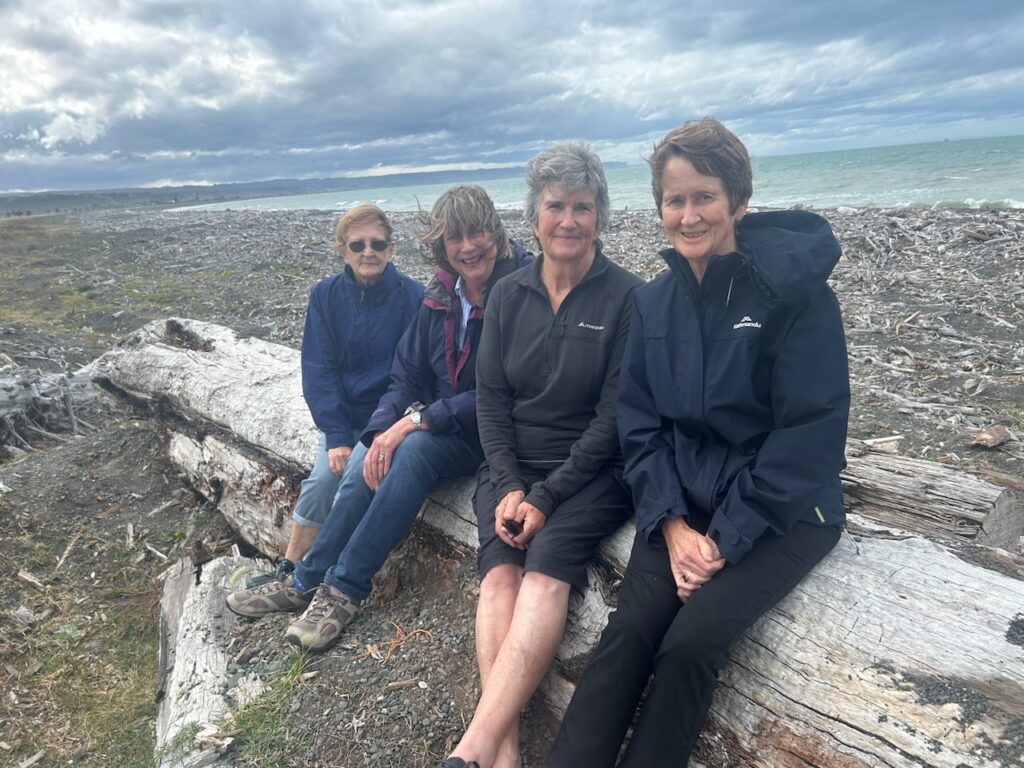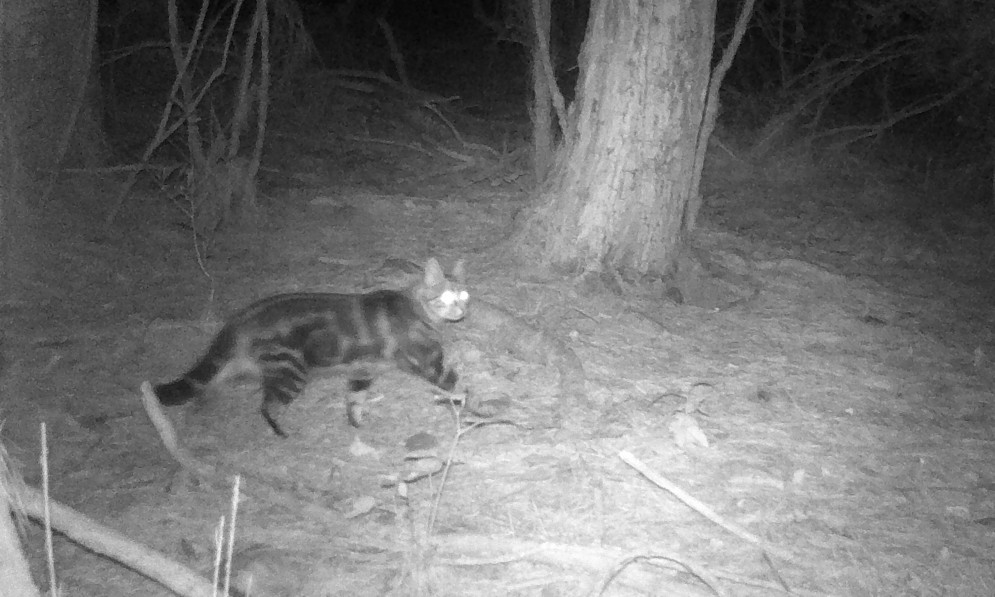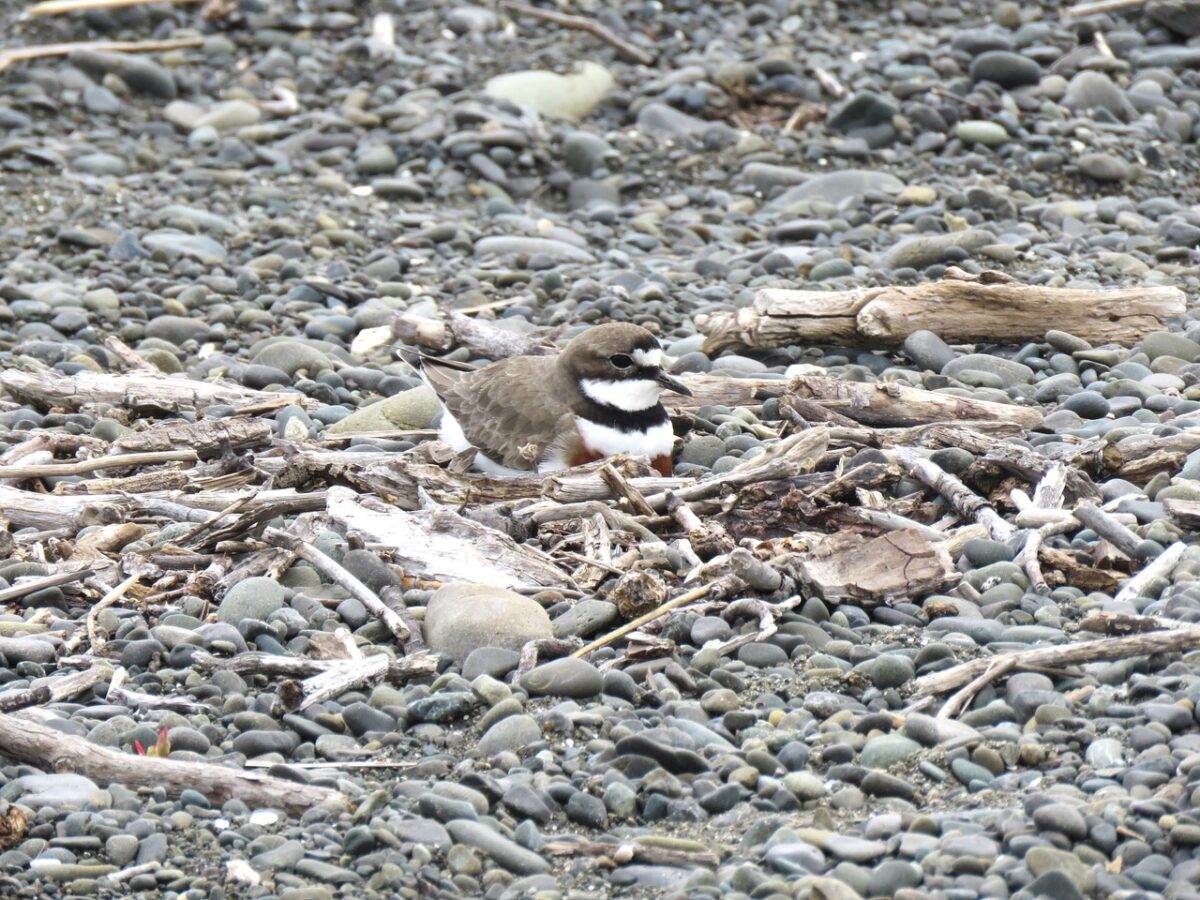After a disastrous season for fledging banded-dotterel chicks, there are calls for urgent action on cat management in Hawke’s Bay.
Despite close monitoring, plus trapping of rats, mice, stoats, rabbits and an enforcement of dog bylaws, banded-dotterel nests on our coast were repeatedly plundered during the last breeding season August 2023 to January 2024, with eggs and chicks eaten.
So bad has the season been that no fledging chicks have survived at the monitored coastal site between Westshore and Bayview.
“It’s been disastrous,”says Lynne Anderson who leads a team of 16 volunteers at Westshore/Bayview. “The majority of nests have been predated and trail cameras show the culprits to be cats and hedgehogs. One cat in particular is a constant offender – caught twice on camera predating dotterel nests – and suspected of predating many more. As it is a built-up area, we are reluctant to live trap cats.”

Feral cats have also been caught around the Ahuriri Estuary and at Waipūreku between the Ngāruroro and Tukituki river-mouth estuaries. Marilyn Scott, who leads Save the Dotterel volunteers-Waipūreku says feral cats are the number one predator at their sites where they have started live trapping.
From a total of 28 nests, each with usually three eggs laid, seven fledged birds have survived at Waipūreku with the possibility that number may go up to 10 or 11 at season’s end. It’s a better result than Bayview/Westshore, but still not great.
Concerned that banded dotterels (also called pohowera) could become extinct on HB’s coast, Lynne, Marilyn and their volunteers have combined with Napier Forest & Bird requesting Napier City Council do an early review of the Animal Control Bylaw 2021 regarding cats.

This echoes a national effort by NZ Forest & Bird to introduce a Cat Management Act to Parliament stipulating mandated microchipping and desexing of all pet cats. In essence making it compulsory for all cats to be registered, desexed and microchipped (with appropriate exemptions) and for cat breeders to be registered, and the number of cats per household limited.
Campaigners would also like to see a clause encouraging cat owners to keep their cat(s) inside at night to protect wildlife. They say cats do most of their hunting at night and have been known to travel considerable distances.
“Cats themselves will benefit with less cat abandonment,” says Lynne. “Often the abandoned cat either starves; becomes a ‘stray’; is caught in a kill trap or lives on to become feral and decimate our wildlife. “
She says there are an estimated several million feral cats in New Zealand.
Napier Mayor Kirsten Wise acknowledges that the dearth of fledging pohowera chicks in HB this year is a problem. However, there has been no official discussion with her Council. “My personal view is to support NZ Forest & Bird to get the Cat Management Act over the line in Parliament this year, before we consider doing something at a local level.”
Pohowera are endemic to NZ, with some 16% of the world’s population in Hawke’s Bay. Their national conservation status is ‘At Risk, Declining’. What’s more, pohowera are an ‘umbrella’ species – i.e. protecting them, indirectly protects many other species that make up the ecological community of its habitat.
For many years, pohowera have chosen to use the wide shingle beaches and braided river mouths around Hawke’s Bay as breeding sites. They arrive in July from their winter-feeding grounds; the first nests are typically laid from about mid-August and the birds then remain in the breeding area into the following February (depending if there are late chicks). Many pairs will nest twice in one season especially if the first nest failed.
Official monitoring of pohowera in Hawke’s Bay began in 2022. That year Napier City Council funded and erected a three wire fence, 400m long, 30m wide on the coast between Bayview and Westshore to protect the area.
If you want more information or to join one of the volunteer Save The Dotterel groups in HB contact napier.branch@forestandbird.org.nz
Read more on Forest and Bird’s national campaign to get A Cat Management Act in the Autumn 2024 Forest and Bird magazine and at www.forestandbird.org.nz/support-us/appeals/support-predator-free


Thanks Tess for bringing this issue to a wider audience. I’m part of the Westshore/Bayview Save the Dotterel team, and only learned about the dotterels existence myself in recent years. They are well-camouflaged on the beach (particularly their nests on the gravel), usually shy of people, and don’t nest close together, so it’s easy not to know they are there. When monitoring, it’s great to build your knowledge about the birds’ behaviour. Always an amazing thought to think of Aotearoa, pre-human population, and the hundreds of thousands of years the native birds have been here.
If we are serious in protecting fauna, all cats, domestic or otherwise, must be confined to owners properties or deemed feral. Cat owners are amongst the most arrogant, entitled neighbour’s.
Why “pets” are allowed to roam freely, defecate on neighborhood properties with the real chance of spreading disease, and kill native birds and skinks is utterly incomprehensible. Our Judiciary has a lot to answer for.
I agree entirely! Lower Hutt council have done this; we need to do this too!
Instead of wasting ratepayers $$$$$$$$ on driveon mowers cutting next to No Grass Now & Winter time! The SPCA got funded by NCC and did an excellent job of dealing to a variety of ferral pests during my time on council. In particular the Blue Penguin chick’s. Just wondering why are they Not involved now?